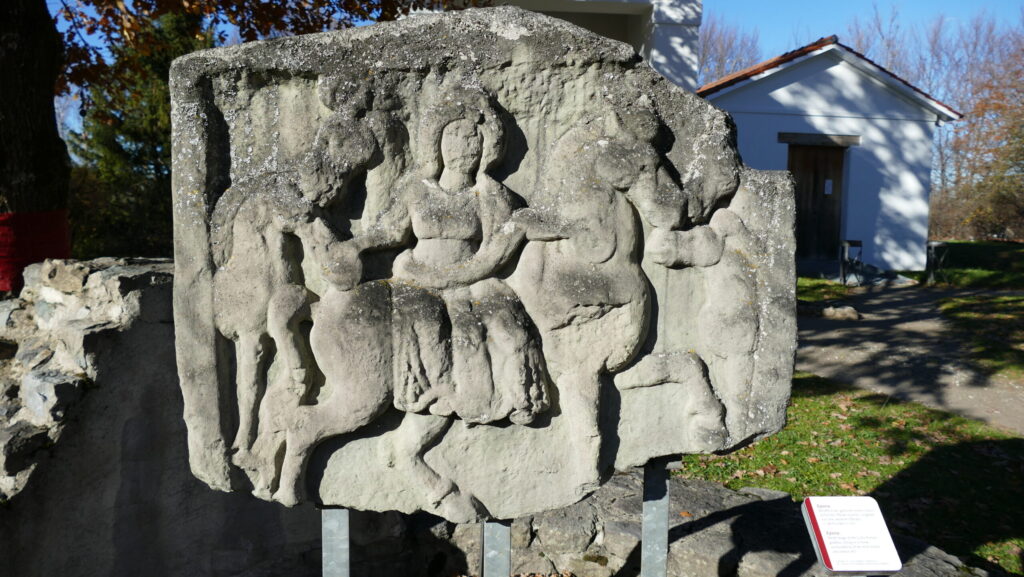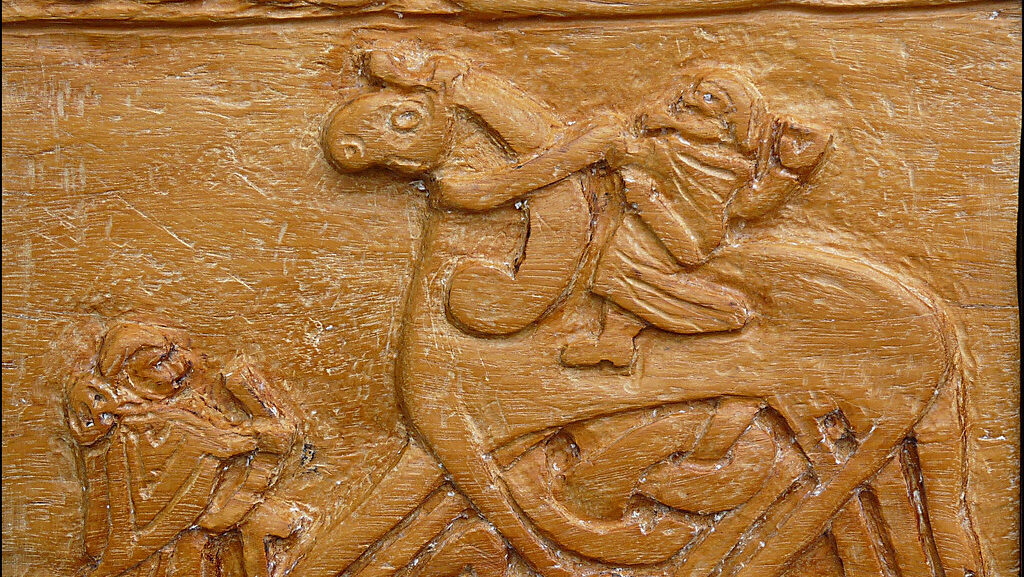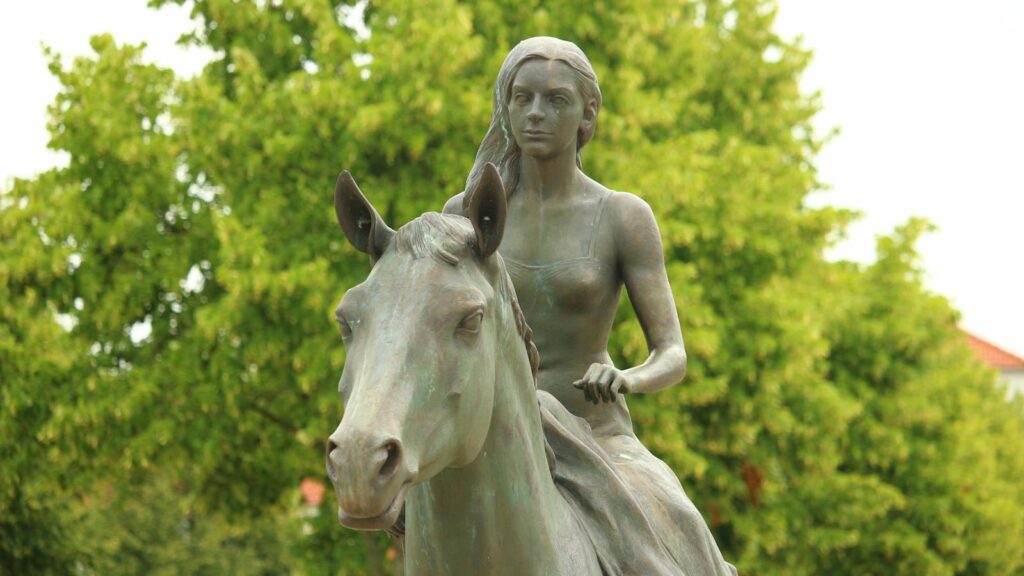Throughout the ancient world, few animals have captured the human imagination quite like the horse. These majestic creatures revolutionized transportation, warfare, agriculture, and trade, fundamentally altering the course of civilization itself. It’s no wonder then that horses transcended their earthly importance to become divine figures in numerous pantheons across cultures. From the windswept steppes of Central Asia to the Mediterranean shores, from Nordic fjords to Mesoamerican highlands, horse deities galloped through the mythological landscape, embodying power, fertility, death, sun, and even creation itself. These divine equines and horse-associated gods shaped religious practices, influenced political structures, and left lasting impressions on art and literature that continue to resonate today. This exploration takes us on a journey through time and across continents to understand how these magnificent creatures became intertwined with humanity’s spiritual understanding of the universe.
The Symbolic Power of Horses in Ancient Religious Thought

Before diving into specific horse deities, we must understand why horses became such powerful religious symbols. Horses represented a unique combination of traits that naturally lent themselves to divine association. Their strength, speed, and endurance made them natural symbols of power and vitality, while their usefulness in both peace and war connected them to concepts of life, death, and transformation. In many cultures, horses came to symbolize the sun’s journey across the sky, representing cosmic order and the passage of time. Their domestication fundamentally altered human civilization, creating a sense of awe and reverence that translated naturally into religious significance. For nomadic societies especially, horses represented freedom, wealth, and prosperity, further cementing their place in religious iconography and mythology.
Epona: Celtic Horse Goddess of Sovereignty and Protection

Among the most venerated horse deities of the ancient world was Epona, whose worship originated among Celtic tribes before spreading throughout the Roman Empire. Uniquely, Epona was one of the few Celtic deities officially recognized in Rome, with her own festival (Eponalia) celebrated on December 18th. Primarily portrayed as a woman riding sidesaddle on a mare or surrounded by horses, Epona represented fertility, protection, and sovereignty. Her name derives from the Celtic word for horse, “epos,” indicating her fundamental connection to these animals. Archaeological evidence shows her worship was particularly strong among cavalry units in the Roman army, who saw her as a protector of horses and riders. Beyond military contexts, rural communities venerated her for protection of horses, mules, and donkeys crucial to agricultural success.
Poseidon/Neptune: Creator of Horses in Greco-Roman Tradition

Though primarily known as sea gods, both Poseidon (Greek) and Neptune (Roman) held significant associations with horses, often bearing the epithet “Horse-Father” or “Earth-Shaker.” According to Greek mythology, Poseidon created the first horse by striking his trident into the earth, bringing forth the first horse, Skyphios. This divine connection made Poseidon the patron of horse racing and equestrian activities, with many temples dedicated to “Poseidon Hippios” (Horse Poseidon) throughout ancient Greece. Corinth, with its prestigious Isthmian Games featuring horse racing, maintained particularly strong worship of Poseidon’s equine aspect. The association between this powerful deity and horses underscores the animal’s importance in Greek society, where owning horses signified wealth and status. Archaeologists have found numerous votive offerings shaped like horses at Poseidon’s sanctuaries, demonstrating the strength of this connection in popular worship.
Hayagriva: The Horse-Headed Deity of Hindu and Buddhist Traditions

In South Asian religious traditions, Hayagriva represents a fascinating manifestation of horse divinity with dual interpretations. In Hinduism, Hayagriva is an avatar of Vishnu, typically depicted with a human body and a horse’s head, symbolizing the perfect union of divine power and wisdom. Legend tells that when the sacred Vedas were stolen by demons, Vishnu took the Hayagriva form to recover this sacred knowledge, making him a patron deity of learning and knowledge. Contrastingly, in Buddhist traditions, particularly in Tibetan Buddhism, Hayagriva appears as a wrathful deity with three horse heads, used in meditation practices to overcome obstacles and negative forces. The horse’s natural association with speed and power becomes, in Hayagriva, a metaphor for the swift transmission of knowledge and the power to overcome spiritual ignorance. Temples and monasteries throughout India, Nepal, and Tibet contain ancient sculptures and paintings of this remarkable horse-headed deity.
The Norse Sleipnir: Odin’s Eight-Legged Horse

In Norse mythology, Sleipnir stands as perhaps the most remarkable mythological horse figure, serving as the eight-legged steed of Odin, the All-Father. Born from the trickster god Loki (who transformed into a mare) and the stallion Svaðilfari, Sleipnir’s unusual origin story reflects the complex nature of Norse cosmic understanding. The eight legs of Sleipnir are widely interpreted by scholars as representing the eight directions of the compass, symbolizing Odin’s omnipresence and ability to traverse all realms. Described in the Eddas as “the best of all horses,” Sleipnir could gallop over land, sea, and air, and most importantly, could journey between the worlds of Asgard, Midgard, and Hel. The archaeological record supports the cultural significance of this mythological horse, with several ancient stone carvings in Sweden and Norway depicting eight-legged horses, believed to represent Sleipnir. In Viking funeral practices, Sleipnir was thought to carry the deceased to the afterlife, reflecting the horse’s role as psychopomp in Norse religious thought.
Sun Horses: Divine Steeds Pulling Solar Chariots

Across multiple ancient civilizations, horses were intimately connected with solar deities, often depicted pulling the sun’s chariot across the sky. In Greek mythology, the god Helios rode a chariot pulled by four horses named Pyrois, Aeos, Aethon, and Phlegon, whose fiery nature symbolized the sun’s heat and light. The Hindu sun god Surya similarly rode across the heavens in a chariot drawn by seven horses, representing the seven colors of the rainbow or the seven days of the week. In Baltic mythology, particularly Latvian and Lithuanian traditions, two white horses pulled the chariot of Saule, the sun goddess, while in Slavic beliefs, the god Dazhbog drove a chariot with fire-breathing horses. These solar associations highlight horses’ perceived connection to celestial forces and cosmic order. Archaeological evidence, including Bronze Age rock carvings from Sweden and gold artifacts like the Trundholm Sun Chariot from Denmark, demonstrates how widespread these sun-horse associations were throughout ancient Indo-European cultures.
Horse Sacrifice: Sacred Rituals Across Cultures

The sacred status of horses in ancient religions is perhaps most powerfully demonstrated through horse sacrifice rituals practiced across numerous cultures. The Ashvamedha in ancient India represented one of the most elaborate horse sacrifices, performed by kings to establish sovereignty over territories where the sacrificial horse roamed freely for a year before the ritual. In Scythian and other steppe cultures, archaeological evidence reveals elaborate horse burials accompanying human remains, with horses richly adorned with decorative gear. The Romans practiced the October Horse sacrifice during the festival of Equus October, where the right-hand horse of a victorious chariot team would be sacrificed to Mars. These sacrifices weren’t merely demonstrations of wealth, but profound religious acts recognizing the horse’s divine associations and power. The prevalence of horse sacrifice across geographically distant cultures speaks to the universal spiritual significance attributed to these animals in the ancient world.
Rhiannon: Welsh Horse Goddess of Sovereignty and the Otherworld

In Welsh mythology, Rhiannon emerges as a complex figure fundamentally associated with horses and divine sovereignty. First appearing in the Mabinogion, she is described as riding a magnificent white horse that moves faster than any pursuer, symbolizing her otherworldly nature. After falsely being accused of devouring her own son, Rhiannon was punished by having to carry visitors on her back like a horse, directly connecting her to equine identity. Scholars have identified her as a sovereignty goddess whose marriage to mortal kings legitimized their rule, a common Celtic mythological motif. The birds of Rhiannon, whose songs could “wake the dead and lull the living to sleep,” connect her to the Otherworld and passage between realms, mirroring the psychopomp role horses often played in Celtic belief. Archaeological finds including horse figurines at sites associated with female deities throughout Celtic territories suggest widespread worship of horse goddesses like Rhiannon across ancient Britain, Ireland, and Gaul.
White Horse Gods of Asia: From Central Asia to Japan

Across the vast expanse of Asia, white horse deities held particular significance in numerous religious traditions. In Central Asian shamanic practices, white horses were considered intermediaries between human and spiritual realms, often ritually sacrificed to facilitate the shaman’s journey to other worlds. The Turkic sky god Tengri was frequently associated with white horses, which were considered his earthly manifestations. In China, the White Horse of Buddhism holds special significance as the mount that carried the first Buddhist scriptures from India to China, leading to the establishment of the White Horse Temple, China’s first Buddhist monastery. Japanese Shinto traditions feature the sacred white horses of Ise Grand Shrine, kept as living divine symbols associated with the sun goddess Amaterasu. Archaeological evidence from kurgan burials across the Eurasian steppe reveals the special treatment afforded to white horses, often buried with elaborate trappings and sacrificial offerings, underscoring their divine status in these ancient cultures.
Xanthos and Balios: The Divine Horses of Achilles

Greek mythology presents us with Xanthos and Balios, the immortal horses of Achilles, whose divine nature and extraordinary abilities elevate them beyond mere animals to semi-divine status. Born from the union of Zephyrus (the West Wind) and a Harpy named Podarge, these horses possessed the ability to fly and were said to be faster than the wind itself. In Homer’s Iliad, Xanthos is briefly granted human speech by Hera to prophesy Achilles’ impending death, a rare moment in classical literature where a horse assumes the role of divine messenger. Their immortality and supernatural origins place them in a unique category between gods and animals, reflecting the ancient Greek understanding of horses as creatures connected to divine power. The special treatment of these horses in the narrative emphasizes the close bond between warriors and their steeds, a relationship that had both practical military significance and deep religious meaning in ancient Greek culture.
Horse Deities in the Americas: From Aztec to Plains Cultures

Though horses were reintroduced to the Americas by European colonizers, various indigenous American cultures quickly incorporated horses into their existing religious frameworks. Among the Plains tribes, horses became associated with spiritual power and were integrated into religious ceremonies, with the “horse medicine” spiritual complex developing around them. The Lakota honored horses in the sacred Sun Dance ceremony, while many tribes developed specific rituals for painting and blessing horses before hunts or battles. In Aztec civilization, though existing before the reintroduction of horses, the god Mixcoatl rode a serpentine creature that was later easily associated with horses when they appeared. Archaeological evidence and ethnographic records show how rapidly horses were elevated to sacred status in indigenous American spirituality, demonstrating the animal’s natural affinity for divine association. This adaptive integration highlights how horses, regardless of their historical presence, seem naturally suited to divine symbolism across human cultures.
Horses of the Underworld: Equine Guides to the Afterlife

Across numerous ancient traditions, horses served a crucial function as psychopomps, guiding souls between the world of the living and the realm of the dead. In Celtic belief, the horse goddess Epona held dual aspects as both fertility deity and guide to the afterlife, reflecting the Celtic understanding of death as transition rather than end. Norse mythology featured Sleipnir’s ability to travel between worlds, while Greek tradition told of the dark horses pulling Hades’ chariot. Etruscan tomb paintings frequently feature horses in funeral processions, symbolizing the journey to the afterlife. Archaeological evidence strongly supports these mythological connections, with horse sacrifices and horse burials appearing frequently in funeral contexts across Europe and Asia. The relationship between horses and death may stem from their speed and endurance, qualities that would serve well in the journey between worlds. This psychopomp role represents one of the most widespread and enduring aspects of horse divinity across cultures.
The Legacy of Horse Deities in Modern Culture and Religion

The divine equine figures of ancient civilizations continue to influence modern culture, spirituality, and symbolism in surprising ways. Epona and other horse goddesses have been revived in contemporary pagan and Wiccan practices, where they symbolize feminine strength and connection to nature. In parts of India and Nepal, traditions honoring Hayagriva continue unbroken, with annual festivals and pujas dedicated to this horse-headed deity. Pop culture frequently draws on these ancient horse gods, with Sleipnir and other mythological horses appearing in books, films, and games, introducing these figures to new generations. Even secular horse symbolism in modern contexts—from “horsepower” in engines to the “dark horse” candidate in politics—carries echoes of the animal’s ancient divine associations with power, speed, and transformation. Horse therapy programs sometimes explicitly draw on the animal’s historical spiritual significance, recognizing the deep psychological impact horses have had on human consciousness across millennia.
Conclusion

The worship of horse deities across ancient civilizations reveals not just the practical importance of these animals to human development, but also their profound symbolic power in human religious imagination. From Epona to Hayagriva, from Sleipnir to the sun horses, these divine equines embodied fundamental spiritual concepts including sovereignty, cosmic order, knowledge, transformation, and passage between worlds. The remarkable consistency of horse symbolism across geographically and culturally diverse civilizations speaks to something universal in the human perception of these magnificent animals. As civilization evolved from the ancient world to the present day, horses have gradually lost their practical centrality to human life, yet their spiritual and symbolic significance endures. The divine horse, it seems, continues to gallop through our collective consciousness, connecting us to our ancestors who first looked upon these creatures with wonder and saw in them the very face of the divine.







